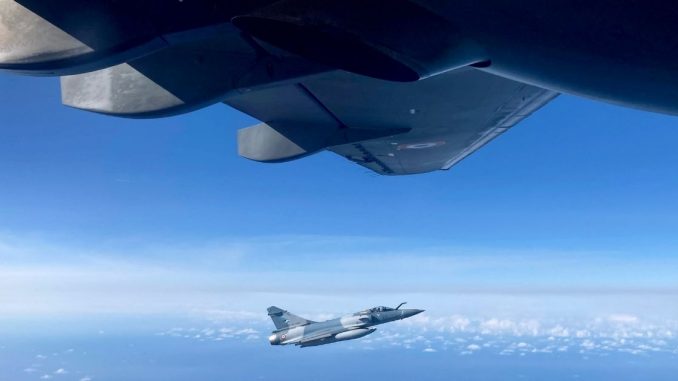
A rise in tension between the North Atlantic Treaty Alliance and the Russian Federation has apparently been escalating for days in the skies above the Baltic and Black seas.
“NATO fighter jets stationed around the Baltic and Black Seas have scrambled multiple times over the past four days to track and intercept Russian aircraft near Alliance airspace”, a Friday NATO release reads.
Warning flags were first sent up on April 26 as multiple unidentified objects appeared on NATO radar arrays.
Fighters scrambled to intercept the unknowns and found Russian military aircraft tracking toward allied airspace.
A quick-reaction force is now on standby, ready to take to the sky at a moment’s notice. Aircraft securing the Baltic Sea region include fighters from Poland, Denmark, France and Spain.
Farther south, aircraft from Romania and the United Kingdom operate over the Black Sea.
Against the backdrop of the conflict in Ukraine, the aerial operations threaten to ignite a larger war that has been brewing since the aftermath of World War II.
Although NATO says the interceptions were operated in a “routine” and “safe” manner, the risks are clear.
“Russian military aircraft often do not transmit a transponder code indicating their position and altitude, do not file a flight plan, or do not communicate with air traffic controllers, posing a potential risk to civilian airliners,” NATO explained.
Of course, the danger to civilian airliners is minimal compared to what awaits if an interception between these two forces turns into a full-on engagement.
A fighter from any NATO member nation being attacked could trigger Article 5 of the alliance charter.
Under the provision, an attack on one member country is considered an attack on all. The full might of the 30 NATO members would then likely come crushing down on Russia.
While NATO appears to have the advantage in numbers nd technology, an actual conflict between two nuclear powers has never happened before; these are uncharted waters.
This might look like a quick war, but would a red line from Putin promising the use of thermonuclear weapons against the homeland of any invading force change things? Not being able to invade your enemy’s country would prove to be a bit of a challenge in any engagement, no doubt.
A march on Moscow might be a distant reality, but nations without the nuclear arsenal to back up red lines of their own may not escape the bloodshed so easily.
The potential scale of the conflict is even set to grow as Finland and Sweden will reportedly petition for membership in the alliance soon.
Whatever comes from an escalation in European skies, it isn’t going to be pretty.
